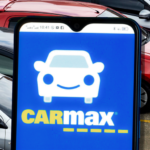Niraali Parekh, Founder and Creative Director of Bokap Designs, in a LinkedIn post, recounted a curious incident involving a colleague who booked an Uber ride using two different phones simultaneously, one Android and one iPhone, for the same pick-up and drop-off points. The results? A significant difference in fares: On Android, the fare was Rs 290.79 and on iPhone, the fare jumped to Rs 342.47.
Parekh further said that this discrepancy is far from accidental. Instead, it reflects a calculated pricing strategy informed by design thinking, user insights, and data analytics.
According to Parekh, there are three key factors at play:
-
User Behaviour Insights Uber and other ride-hailing apps leverage data that suggests iPhone users are often perceived as “premium customers.” Research shows that iPhone users, on average, exhibit greater willingness to pay for services. This insight influences pricing decisions, creating a “device-based” dynamic pricing model.
-
Platform Fees Apple charges app developers up to a 30% commission on in-app purchases, significantly higher than the fees associated with Android’s Play Store. This commission structure indirectly affects pricing strategies, as businesses seek to offset the higher costs associated with Apple’s ecosystem.
-
Dynamic Personalisation Modern apps increasingly employ dynamic pricing algorithms that adapt to user behaviour and profiles. Factors like device type, browsing patterns, and purchase history could subtly influence the fares displayed to users.
In her post, she raised a pertinent question: “When does personalisation improve user experience, and when does it start to feel exploitative?” While the pricing strategy may be rooted in understanding user behaviour and adapting to it, its ethical implications remain murky.
From a business standpoint, dynamic pricing represents an intelligent approach to maximising value. However, for users, it can erode trust if perceived as manipulative or unfair.
The post has since gone viral, with users flooding the comments section to share their thoughts. Reactions have been polarised, highlighting the complexity of the issue.
Some commenters viewed the pricing strategy as an inevitable consequence of a data-driven business model. One user wrote: “Not only Uber it happens in many platforms. I recently found this on MakeMyTrip also. They charge more on hotels when I try to book from my iPhone. The same hotel for same date shows much less cost when I checked from my wife’s android phone. This I discovered accidentally. This unethical business irritates me a lot. I decided not to use MakeMyTrip anymore. Now Uber gets added to my personal banned list.”
On the other hand, critics described the pricing disparity as a breach of trust. A comment read: “Let’s call a spade a spade. This pricing methodology is unethical. When there is ZERO price transparency, consumers get taken advantage of. This is the misuse of data and design to extract value from customers while giving them no tangible benefits in return. Dynamic pricing is nefarious.”
“This is true. It depends various factors like customer location, surge situation, customer / driver rating, official / personal travel, commission to vendor/ app etc. the price can never be same. Only when govt. Decide to intervene and fix pricing this can end. Our govt’s are not interested doing this. Therefore, buyers/customers should be alert and avoid situations where they avoid the losses. This is prevalent in physical business also. Let buyers beware,” a user commented.










